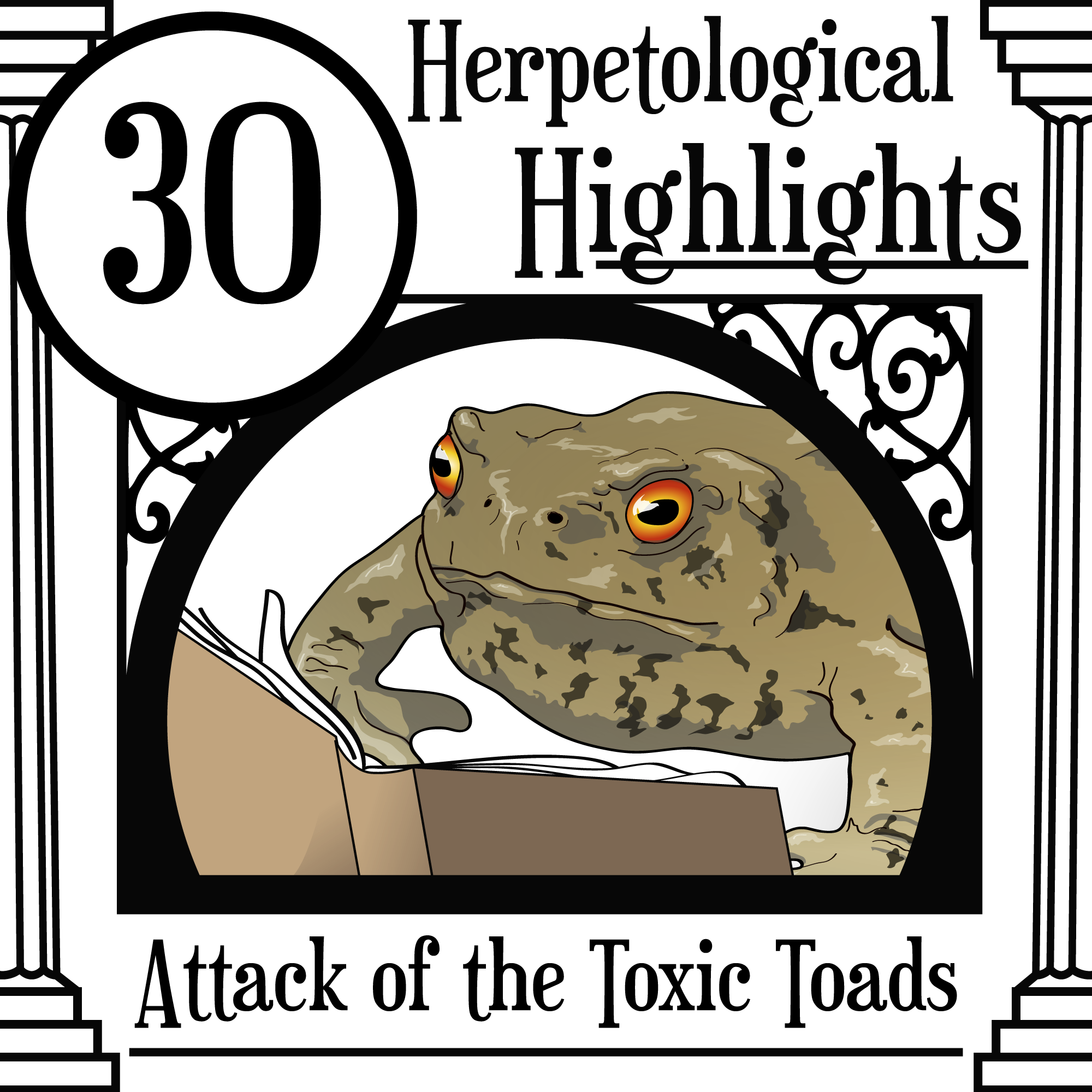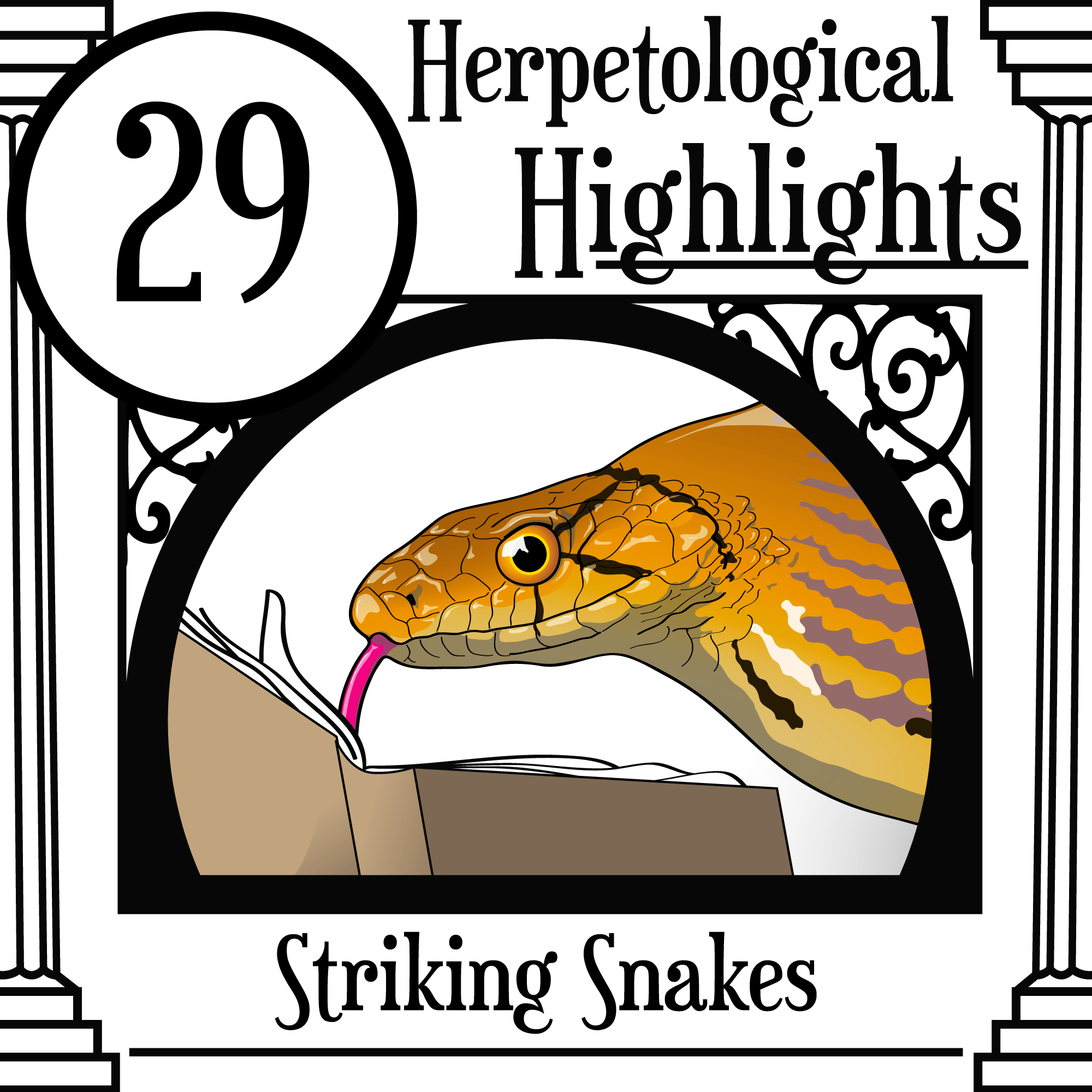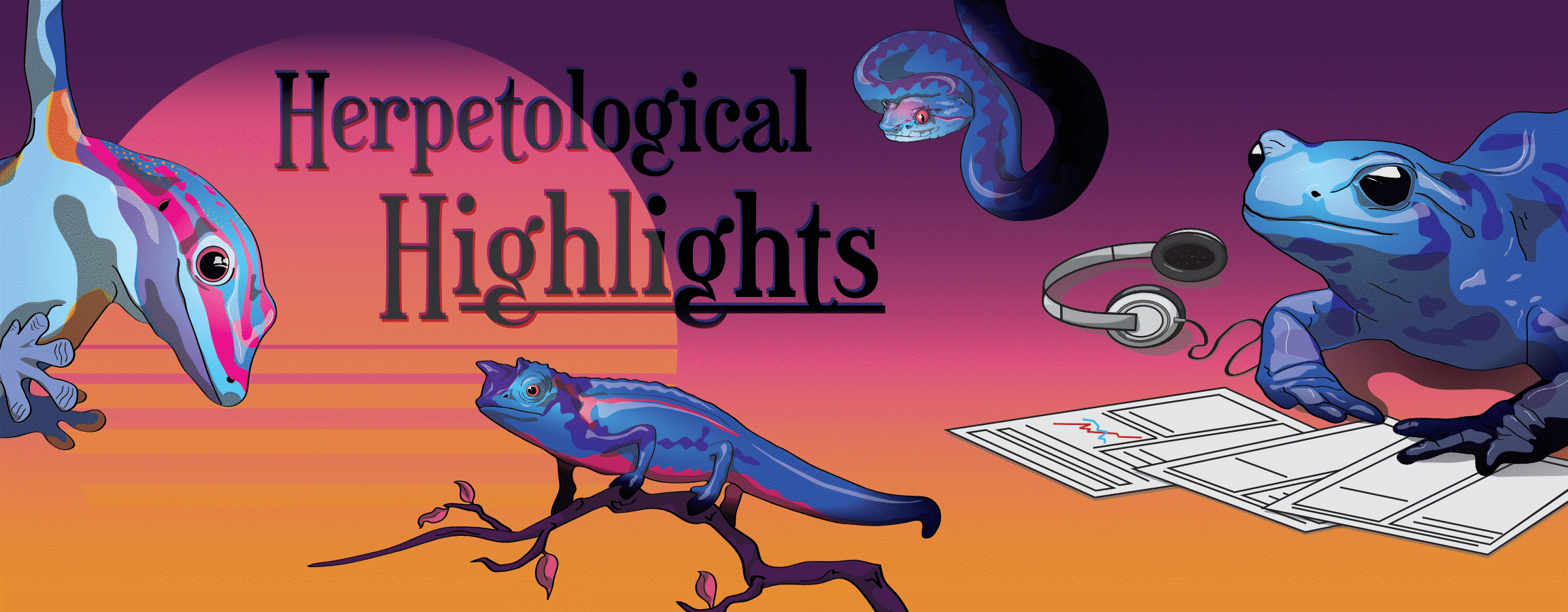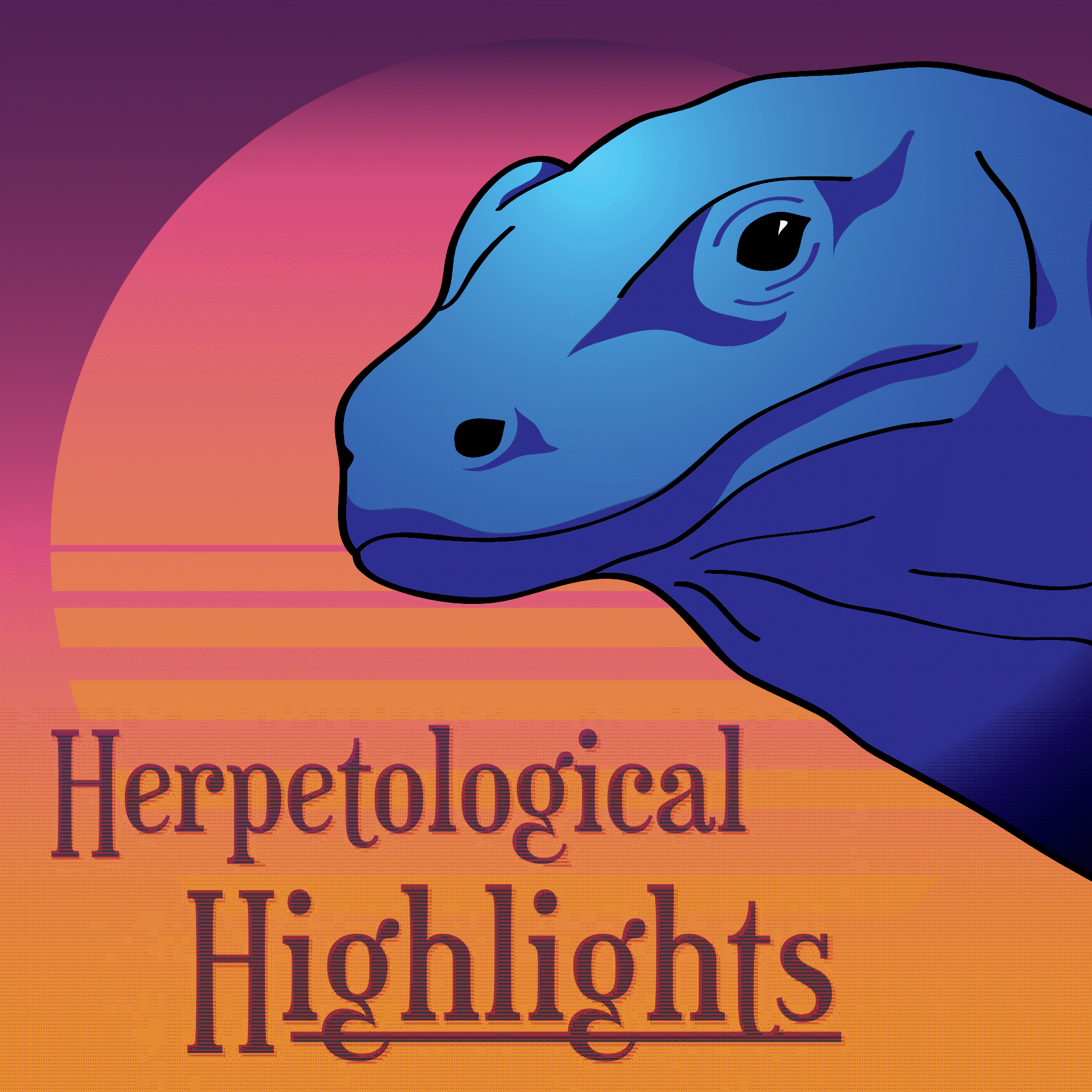Episodes

Tuesday Jun 26, 2018
030 Attack of the Toxic Toads
Tuesday Jun 26, 2018
Tuesday Jun 26, 2018
Generally speaking, toads are laid back, easy-going creatures. But every so often a species will find itself an invader in a new land and wreak total havoc. We discuss one such toad (but not necessarily the one you might think). Of course there is a toad which is brand new to science as well, in our Species of the Bi-Week. FULL REFERENCE LIST AVAILABLE AT: herphighlights.podbean.com

Main Paper References:
Moore, M, JFSN Fidy, and D Edmonds. 2015. “The New Toad in Town: Distribution of the Asian Toad, Duttaphrynus Melanostictus, in the Toamasina Area of Eastern Madagascar.” Tropical Conservation Science 8 (2): 440–55.
Marshall, BM, NR Casewell, M Vences, F Glaw, F Andreone, A Rakotoarison, G Zancolli, F Woog, and W Wüster. 2018. “Widespread Vulnerability of Malagasy Predators to the Toxins of an Introduced Toad.” Current Biology 28 (11): R654–55.
Species of the Bi-Week:
Landestoy T., MA, DB Turner, AB Marion, and SB Hedges. 2018. “A New Species of Caribbean Toad (Bufonidae, Peltophryne) from Southern Hispaniola.” Zootaxa 4403 (3): 523.
Other Mentioned Papers/Studies:
Brown, GP, BL Phillips, JK Webb, and R Shine. 2006. “Toad on the Road: Use of Roads as Dispersal Corridors by Cane Toads (Bufo marinus) at an Invasion Front in Tropical Australia.” Biological Conservation 133 (1): 88–94.
Feit, B, CE Gordon, JK Webb, TS Jessop, SW Laffan, T Dempster, and M Letnic. 2018. “Invasive Cane Toads Might Initiate Cascades of Direct and Indirect Effects in a Terrestrial Ecosystem.” Biological Invasions. Springer International Publishing, 1–15.
Jenkins, RKB, A Rabearivelo, CT Chan, WM Andre, R Randrianavelona, and JC Randrianantoandro. 2009. “The Harvest of Endemic Amphibians for Food in Eastern Madagascar.” Tropical Conservation Science 2 (1): 25–33.
Kelly, E, and BL Phillips. 2018. “Targeted Gene Flow and Rapid Adaptation in an Endangered Marsupial.” Conservation Biology, June.
Kuo, H-Y, C-W Hsu, J-H Chen, Y-L Wu, and Y-S Shen. 2007. “Life-Threatening Episode after Ingestion of Toad Eggs: A Case Report with Literature Review.” Emergancy Medecine Journal 24 (3): 215–16.
Llewelyn, J, K Bell, L Schwarzkopf, RA Alford, and R Shine. 2012. “Ontogenetic Shifts in a Prey’s Chemical Defences Influence Feeding Responses of a Snake Predator.” Oecologia 169 (4): 965–73.
O’Shea, M, A Kathriner, S Mecke, C Sanchez, and H Kaiser. 2013. “‘Fantastic Voyage’: A Live Blindsnake (Ramphotyphlops Braminus) Journeys through the Gastrointestinal System of a Toad (Duttaphrynus melanostictus).” Herpetology Notes 6 (1): 467–70.
Mohammadi, S, Z Gompert, J Gonzalez, H Takeuchi, A Mori, and AH Savitzky. 2016. “Toxin-Resistant Isoforms of Na+/K+-ATPase in Snakes Do Not Closely Track Dietary Specialization on Toads.” Proceedings of the Royal Society B: Biological Sciences 283: 20162111.
Phillips, BL, and R Shine. 2004. “Adapting to an Invasive Species: Toxic Cane Toads Induce Morphological Change in Australian Snakes.” Proceedings of the National Academy of Sciences of the United States of America 101 (49): 17150–55.
Pramuk, JB, T Robertson, JW Sites, and BP Noonan. 2008. “Around the World in 10 Million Years: Biogeography of the Nearly Cosmopolitan True Toads (Anura: Bufonidae).” Global Ecology and Biogeography 17 (1): 72–83.
Reardon, J. T., Kraus, F., Moore, M., Rabenantenaina, L., Rabinivo, A., Rakotoarisoa, N. H., & Randrianasolo, H. H. (2018). Testing tools for eradicating the invasive toad Duttaphrynus melanostictus in Madagascar. Conservation Evidence 15, 12-19.
Ujvari, B, HC Mun, AD Conigrave, A Bray, J Osterkamp, P Halling, and T Madsen. 2013. “Isolation Breeds Naivety: Island Living Robs Australian Varanid Lizards of Toad-Toxin Immunity via Four-Base-Pair Mutation.” Evolution 67 (1): 289–94.
Ujvari, B, H Mun, AD Conigrave, C Ciofi, and T Madsen. 2014. “Invasive Toxic Prey May Imperil the Survival of an Iconic Giant Lizard, the Komodo Dragon.” Pacific Conservation Biology 20 (4): 363–65.
Ujvari, B, NR Casewell, K Sunagar, K Arbuckle, W Wüster, N Lo, D O’Meally, et al. 2015. “Widespread Convergence in Toxin Resistance by Predictable Molecular Evolution.” Proceedings of the National Academy of Sciences 112 (38): 11911–11916.
Vences, M, JL Brown, A Lathrop, GM Rosa, A Cameron, A Crottini, R Dolch, et al. 2017. “Tracing a Toad Invasion: Lack of Mitochondrial DNA Variation, Haplotype Origins, and Potential Distribution of Introduced Duttaphrynus melanostictus in Madagascar.” Amphibia-Reptilia 38 (2): 197–207.
Wogan, GOU, BL Stuart, DT Iskandar, and JA McGuire. 2016. “Deep Genetic Structure and Ecological Divergence in a Widespread Human Commensal Toad.” Biology Letters 12 (1): 20150807.
Other Links/Mentions:
CrocFest - www.crocfest.org
Music:
Intro/outro – Treehouse by Ed Nelson
Other Music – The Passion HiFi, www.thepassionhifi.com

Tuesday Jun 12, 2018
029 Striking Snakes
Tuesday Jun 12, 2018
Tuesday Jun 12, 2018
Vipers, sedentary and slow, until it matters most. But how fast can vipers strike? And how do other snakes compare? We check out a couple of papers answering these questions this fortnight as well as checking in on another Species of the Bi-week. FULL REFERENCE LIST AVAILABLE AT: herphighlights.podbean.com

Main Paper References:
Higham, TE, RW Clark, CE Collins, MD Whitford, and GA Freymiller. 2017. “Rattlesnakes Are Extremely Fast and Variable When Striking at Kangaroo Rats in Nature: Three-Dimensional High-Speed Kinematics at Night.” Scientific Reports 7: 40412.
Penning, DA, B Sawvel, and BR Moon. 2016. “Debunking the Viper’s Strike: Harmless Snakes Kill a Common Assumption.” Biology Letters 12 (3): 20160011.
Species of the Bi-Week:
Wickramasinghe, LJM, DR Vidanapathirana, HKD Kandambi, RA Pyron, and N Wickramasinghe. 2017. “A New Species of Aspidura Wagler, 1830 (Squamata: Colubridae: Natricinae) from Sri Pada Sanctuary (Peak Wilderness), Sri Lanka.” Zootaxa 4347 (2): 275–92.
Other Mentioned Papers/Studies:
Devan-Song, A, P Martelli, D Dudgeon, P Crow, G Ades, and NE Karraker. 2016. “Is Long-Distance Translocation an Effective Mitigation Tool for White-Lipped Pit Vipers (Trimeresurus Albolabris) in South China?” Biological Conservation 204: 212–20.
O’Hanlon, SJ, A Rieux, RA Farrer, GM Rosa, B Waldman, A Bataille, TA Kosch, et al. 2018. “Recent Asian Origin of Chytrid Fungi Causing Global Amphibian Declines.” Science 360 (6389): 621–27.
Rundus, A. S., Owings, D. H., Joshi, S. S., Chinn, E. and Giannini, N. (2007). Ground squirrels
use an infrared signal to deter rattlesnake predation. Proc. Natl. Acad. Sci. U. S. A. 104, 14372–
14376.
Schraft, H. A., & Clark, R. W. (2017). Kangaroo rats change temperature when investigating rattlesnake predators. Physiology & behavior, 173, 174-178.
Other Links/Mentions:
Videos from Higham et al. 2017
- Snake miss: https://www.youtube.com/watch?v=PBEp2LtQwZ8&feature=youtu.be
- Rat escapes: https://www.youtube.com/watch?v=jCxvIk8wS_8&feature=youtu.be
Rattlesnake falls down hill from Barbour and Clark 2012
Music:
Intro/outro – Treehouse by Ed Nelson
Other Music – The Passion HiFi, www.thepassionhifi.com

